Korean Short ribs: Kalbi Can Be Temped!
If there is a food palate that pairs sweet and savory together better than Korean food, I’m not sure what it could be. Korean cuisine—and its American adaptations—joins the deep savory of soy sauce and fermented pastes with the pleasant sweetness of sugar, honey, and fruits like no other. And a prime example of this magic is the famed Korean barbecued short ribs. Called in their native land kalbi or galbi (depending on how you transliterate it), these short ribs are a staple of Korean BBQ joints everywhere.
Today we’ll take a look at Korean short ribs, what they are, and some thermal tips you can use to make them extra tasty and extra enjoyable.
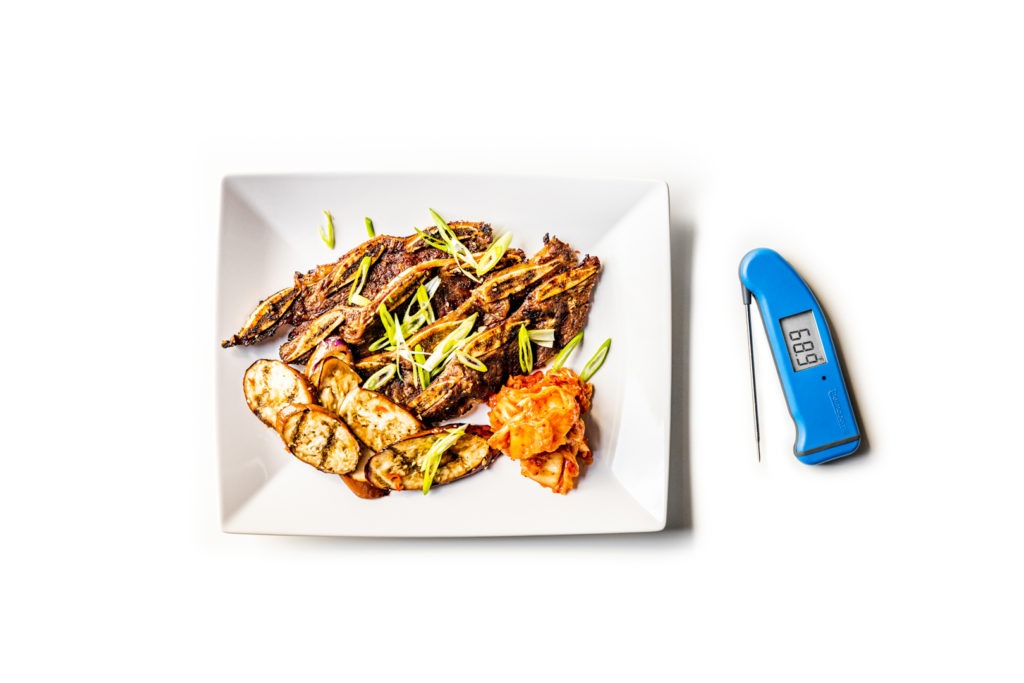
What is kalbi
Kalbi (Korean short ribs) consist of thin strips of beef short ribs that are cut perpendicular to the bone, marinated in a sweet-savory sauce, and then grilled until caramelized and tender.
The cut
If you’re looking to make this dish, you’ll need to have the ribs cut for you by your local butcher. (Either that or you’ll need to use a bandsaw yourself, which we certainly do not recommend.) If you have an Asian market near you, they almost certainly carry them pre-cut, but even most grocery store meat departments can toss a rack of short ribs on their saw and cut you slices that go across all the bones and are about one quarter inch thick. If your butcher knows their stuff, asking for a “flanken cut” will do the trick.
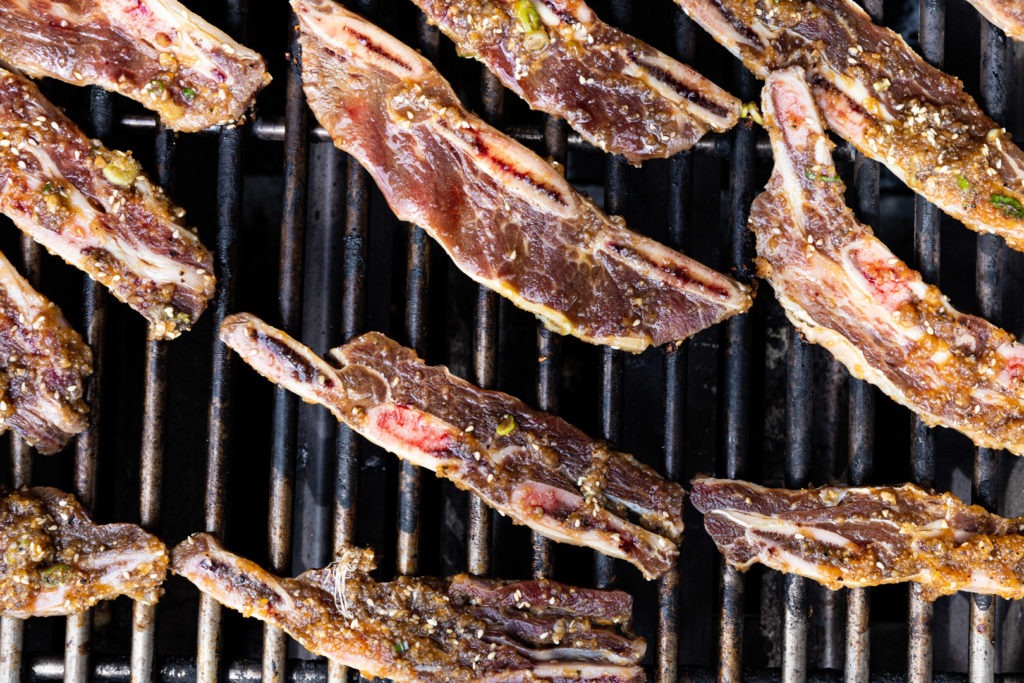
The sauce—Korean BBQ marinade
The marinade for the ribs gets its savory flavor from soy sauce and onion. Some recipes, this one from SeriousEats included, add garlic as well. The sweetness comes from a little brown sugar, but traditional recipes also call for a grated Asian pear (you can substitute a European pear or even an apple if you don’t have access to Asian varieties). That particular honey-sweet flavor gives the meat something special beyond plain sugar. To round out the flavor profile, there is a nice dash of fresh ginger, which plays to both the sweet and the savory side, and a hit of earthy, nutty sesame seed and sesame oil.
The meat is marinated in this concoction for at least one hour, but preferably overnight. Marinate it today for tomorrow. Why the long marination time? There is a natural enzyme in ginger, zingibain, that attacks and breaks up collagen and some other connective proteins. And because the meat is sliced so thin, the enzymes can penetrate all the way through, tenderizing the whole piece. The longer you marinate it, the more tender it will become.
To get the most out of the flavors, this recipe uses a food processor to blend most of the ingredients together. This releases more of the tenderizing and flavoring agents into the mix. When you remove the meat from the marinade to grill it, wipe off the excess pulp that will cling to the meat. Its work is done.
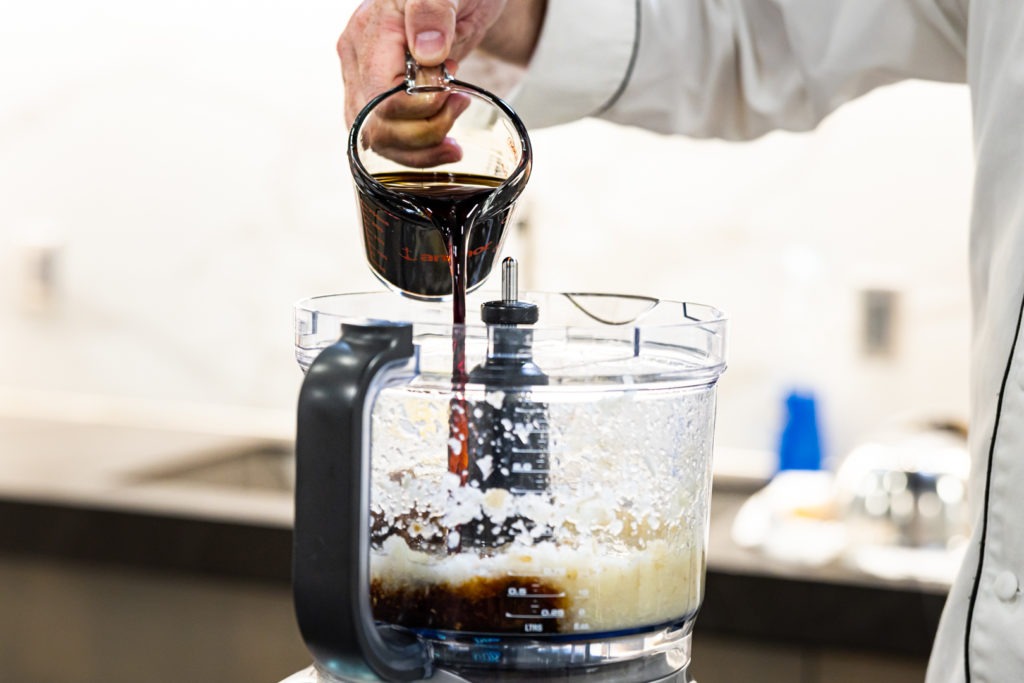
Incidentally, this marinade is amazing on pretty much any meat. Try it on pork chops or grilled chicken, or use it as a marinade for stir-fried meats. It’s great everywhere. And if you want to double the recipe below, it freezes very nicely and is ready to add flavor to any quick dinner prep.
Does temperature matter for Korean short ribs?
Most recipes for kalbi say to grill the meat “until it is well browned on both sides” or some such description. But is that we do at ThermoWorks? No! We can absolutely take the temperature of this cut, and we really should, too. This meat is still full of connective tissue (despite the enzymatic breakdown that it may have gone through during marination) and it needs heat to break down. Cooking rib meat to 170°F (77°C) will begin to break down that collagen, and that is our recommended doneness temp for this dish. You can push it a few degrees higher, but the thinness of the meat will cause it to dry out quickly if you go too far.
But can we really measure the temperature of such a thin cut? No problem! The Thermapen®‘s sensor is so tiny that you can take the temperature of thin cuts like this without difficulty.

Recipe for Korean Short Ribs
Based on the recipe by Sasha Marx at SeriousEats.com
Ingredients
- 1 medium onion cut into 1-inch pieces
- 1 Asian pear cut into 1-inch pieces (substitute a standard pear if not available)
- 5 garlic cloves
- 1-inch piece fresh ginger, cut into 1/4-inch pieces
- 1 C soy sauce
- 1/2 C water
- 1/4 C packed brown sugar
- 2 Tbsp mirin
- 1 Tbsp freshly ground black pepper
- 4 scallions, thinly sliced
- 2 Tbsp toasted sesame oil
- 2 Tbsp toasted sesame seeds
- 3 pounds flanken-style beef short ribs, cut about 1/4–1/2-inch thick
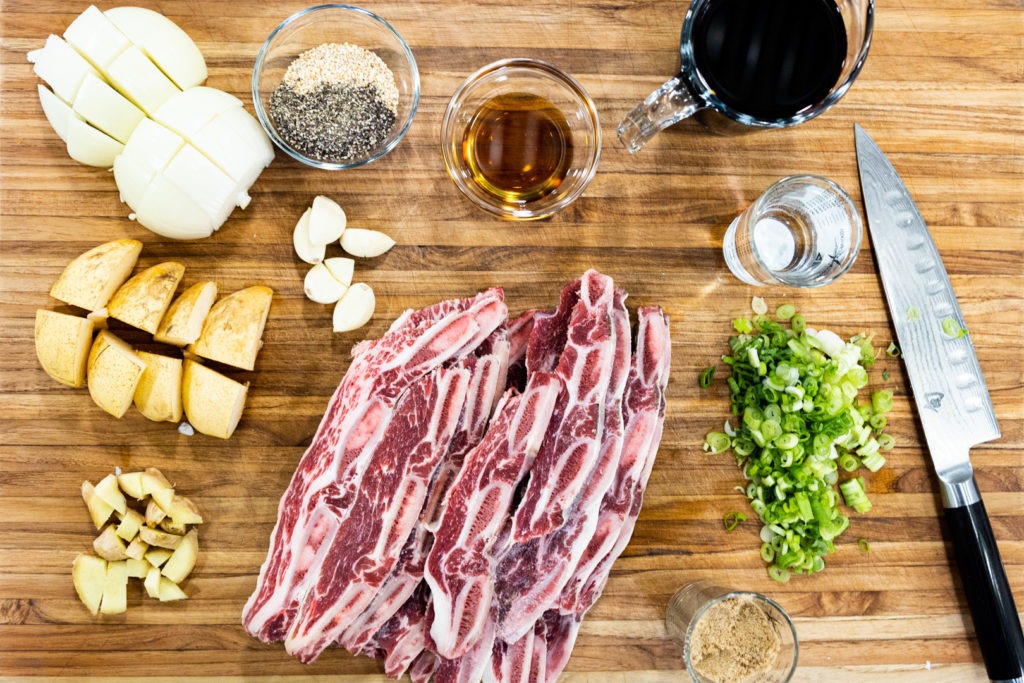
Instructions
- In a food processor, combine the onion, pear, garlic cloves, and fresh ginger. Process into a coarse paste.
- Add the soy sauce, water, sugar, mirin, and pepper to the paste and process further, until everything is well combined.
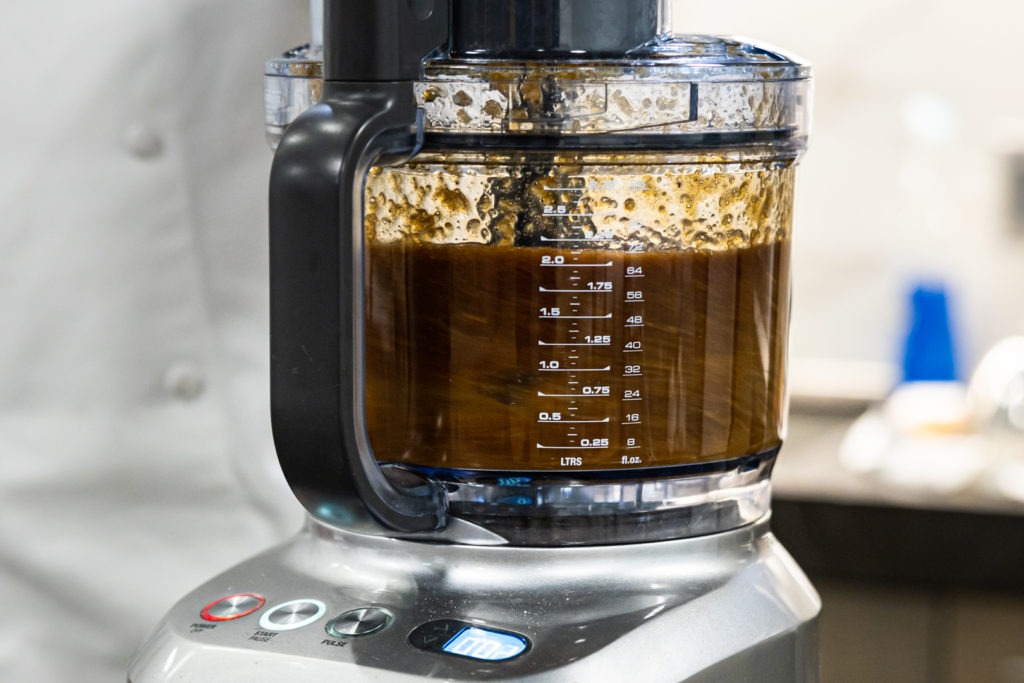
- Transfer the sauce to a bowl and stir in the sesame seeds, sesame oil, and scallions.
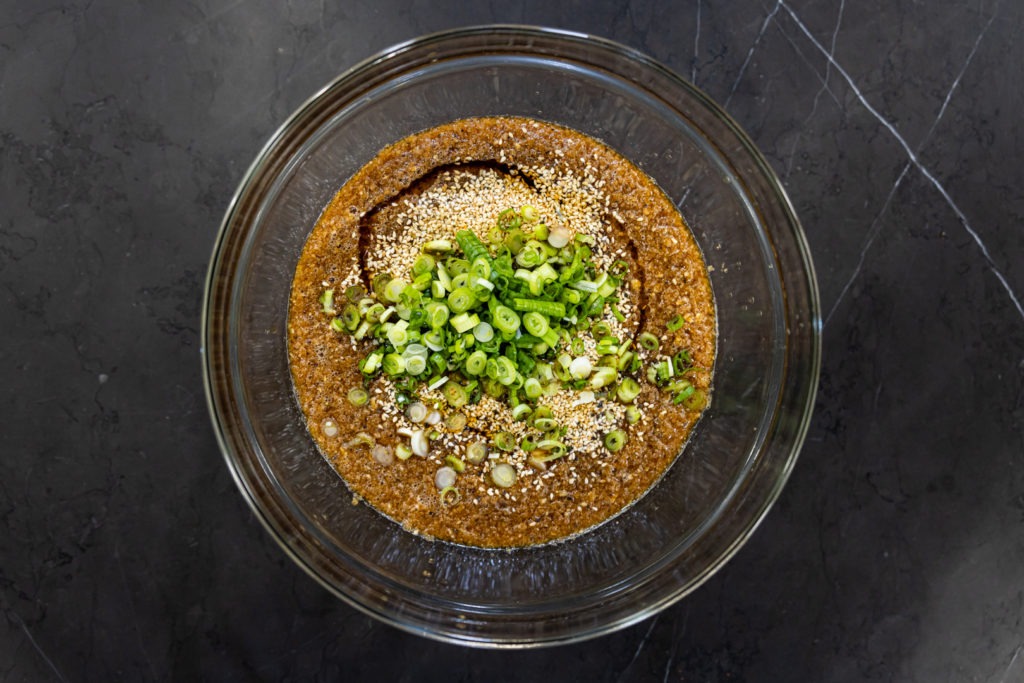
- Lay the meat out in a large baking dish and pour the marinade over it to cover. Move things around so that the marinade has contact with and can coat all the surfaces of the meat.
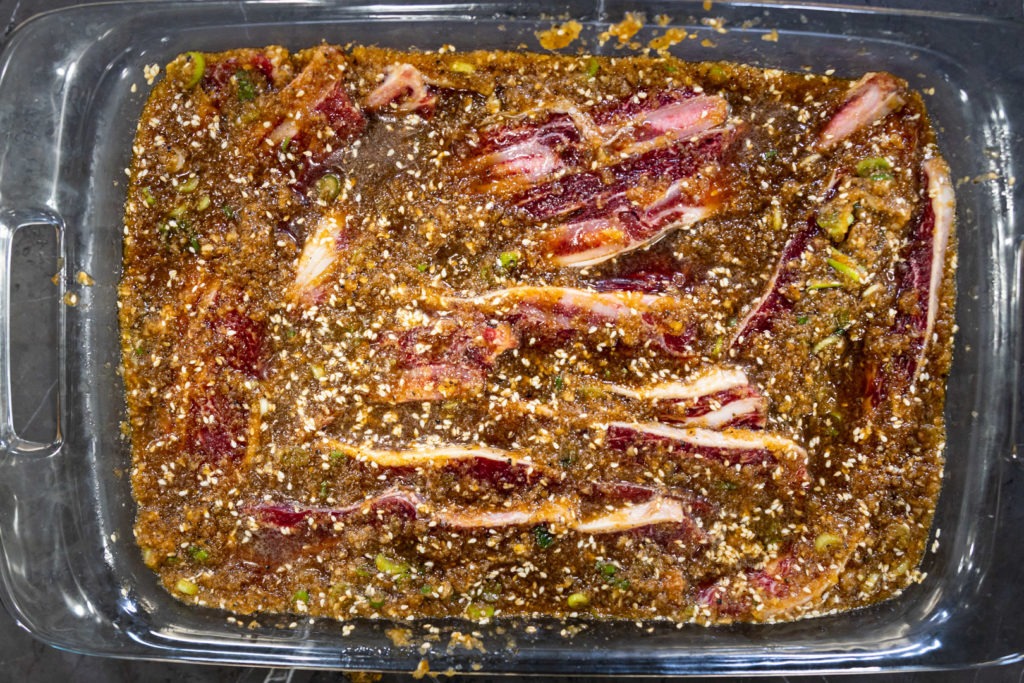
- Marinate, covered, in the refrigerator for at least an hour, but preferably over night.
- When the time comes to cook, preheat your grill for high, direct-heat cooking.
- Remove the meat from the marinade one strip at a time, shaking off the excess pulp. Lay each on the grill and cook, turning occasionally to give it lots of nice char marks.
- Measure the temperature of the meat with a Thermapen®. When it reaches 170°F (77°C), remove the meat from heat. Because the Thermapen is so fast, you can check each individual strip for doneness, not having to guess that the doneness of one will signal the doneness of all. (If your meat is well charred but not quite up to temp, move it to a cooler part of your grill to continue cooking.)
- Eat it! Serve the kalbi with kimchi, steamed rice, grilled veggies, lettuce leaves…whatever you like!
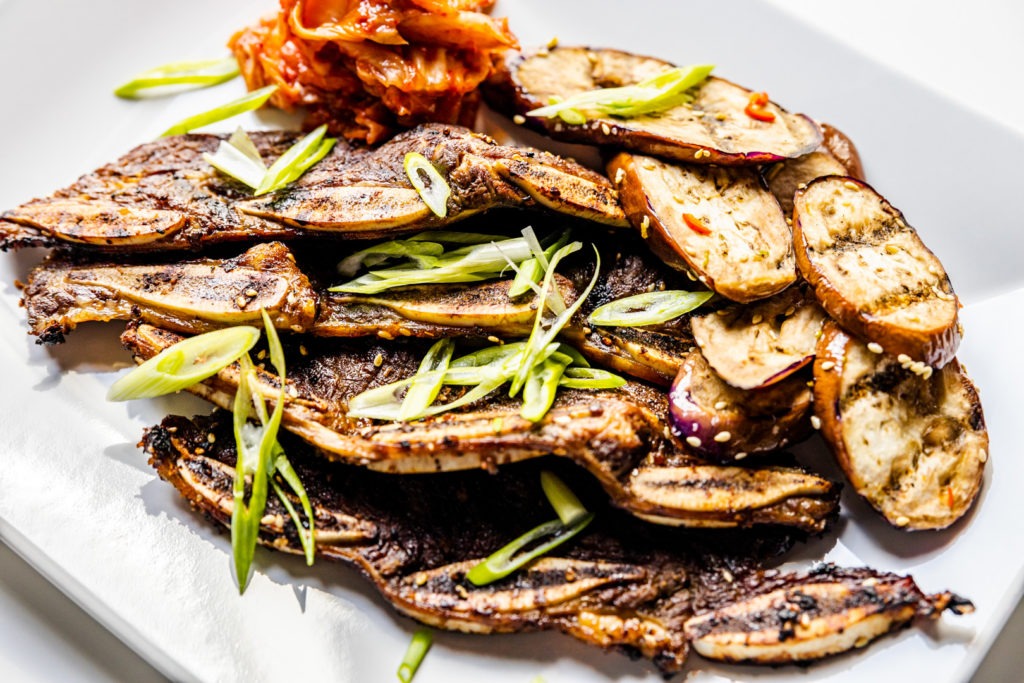
This classic restaurant dish is so easy to make at home that you might end up putting it in regular rotation. Just remember to marinate it and cook it enough to break down that collagen. Watch for that critical temp of 170°F (77°C) to make the meat more tender, and enjoy!
Shop now for products used in this post:


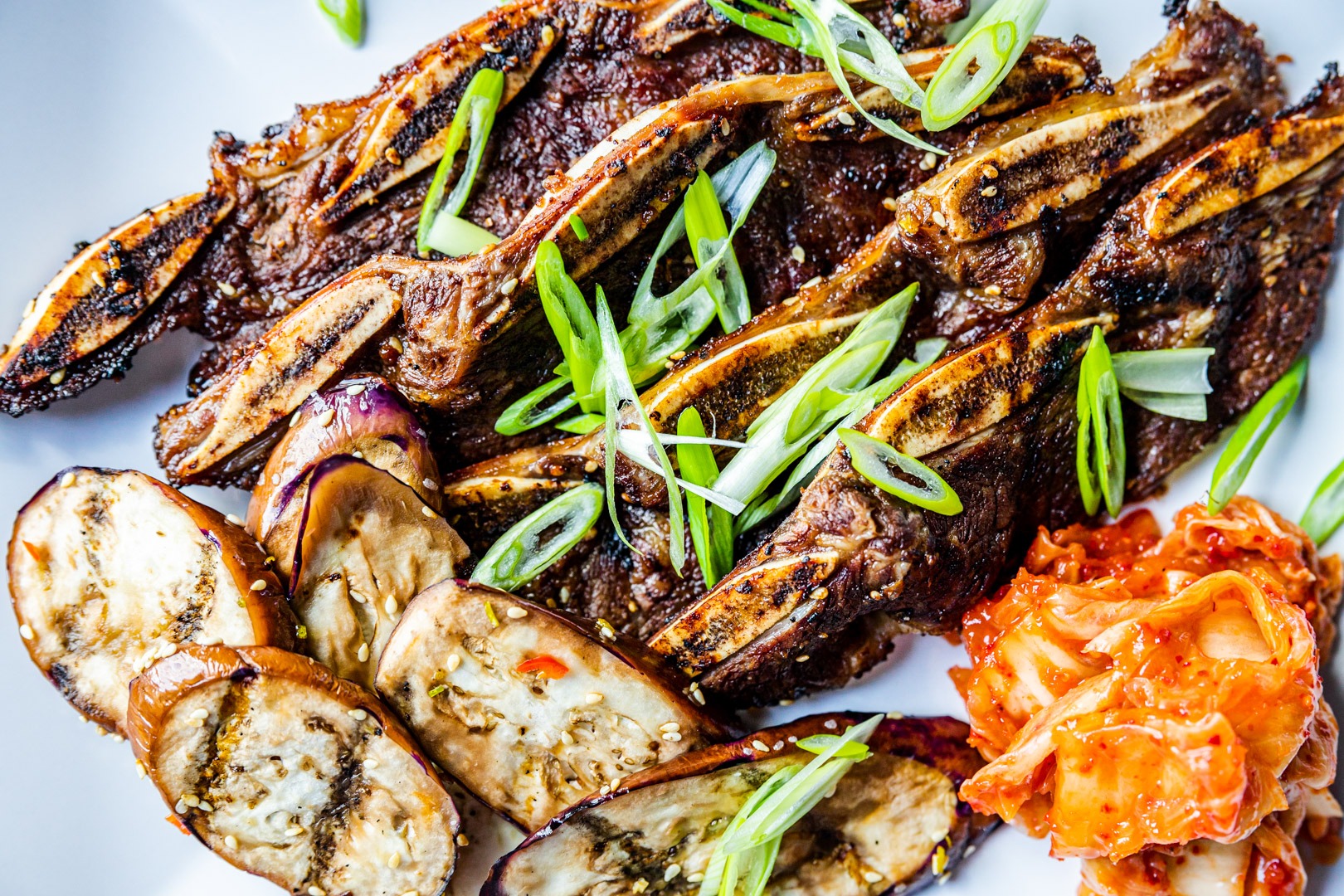
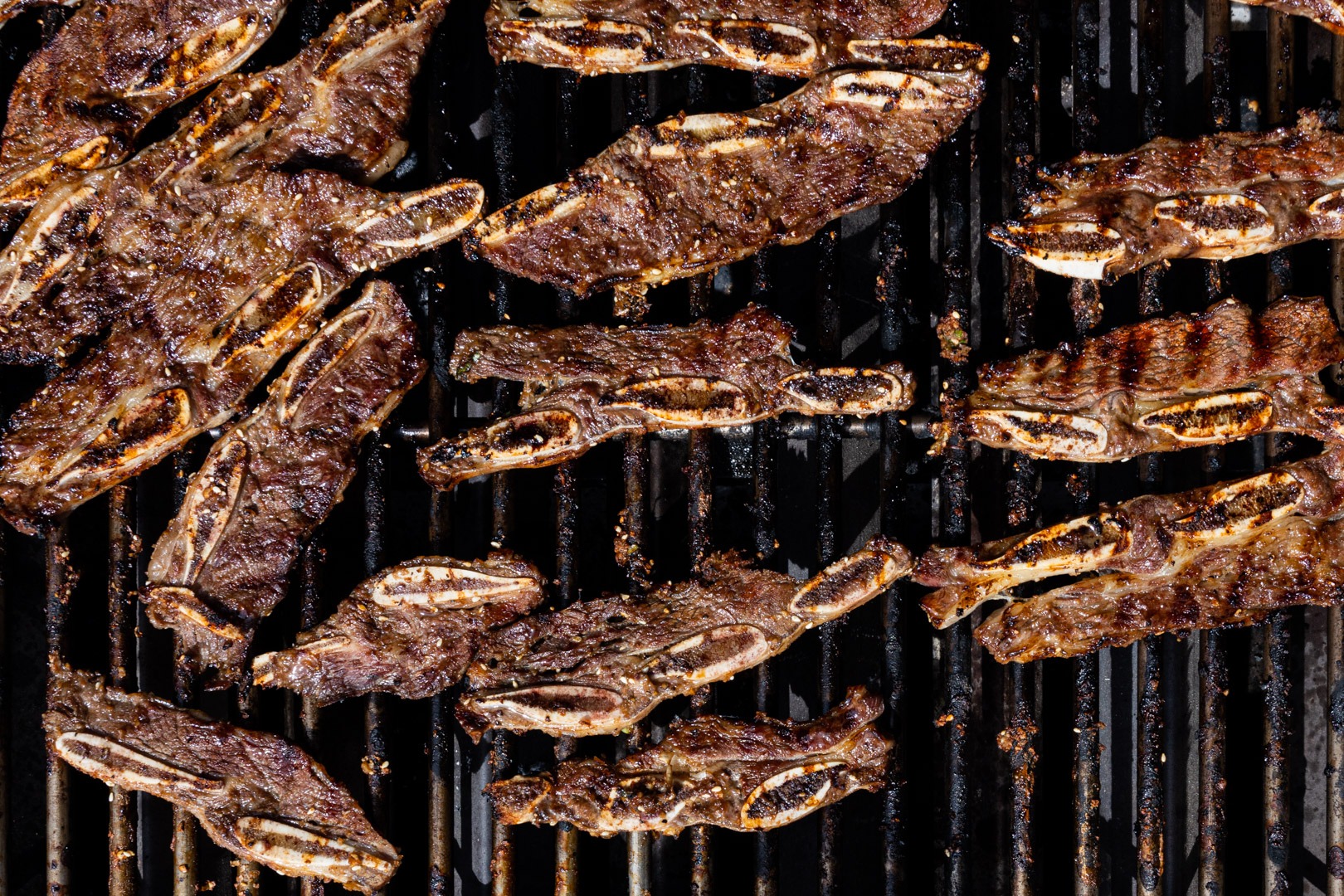
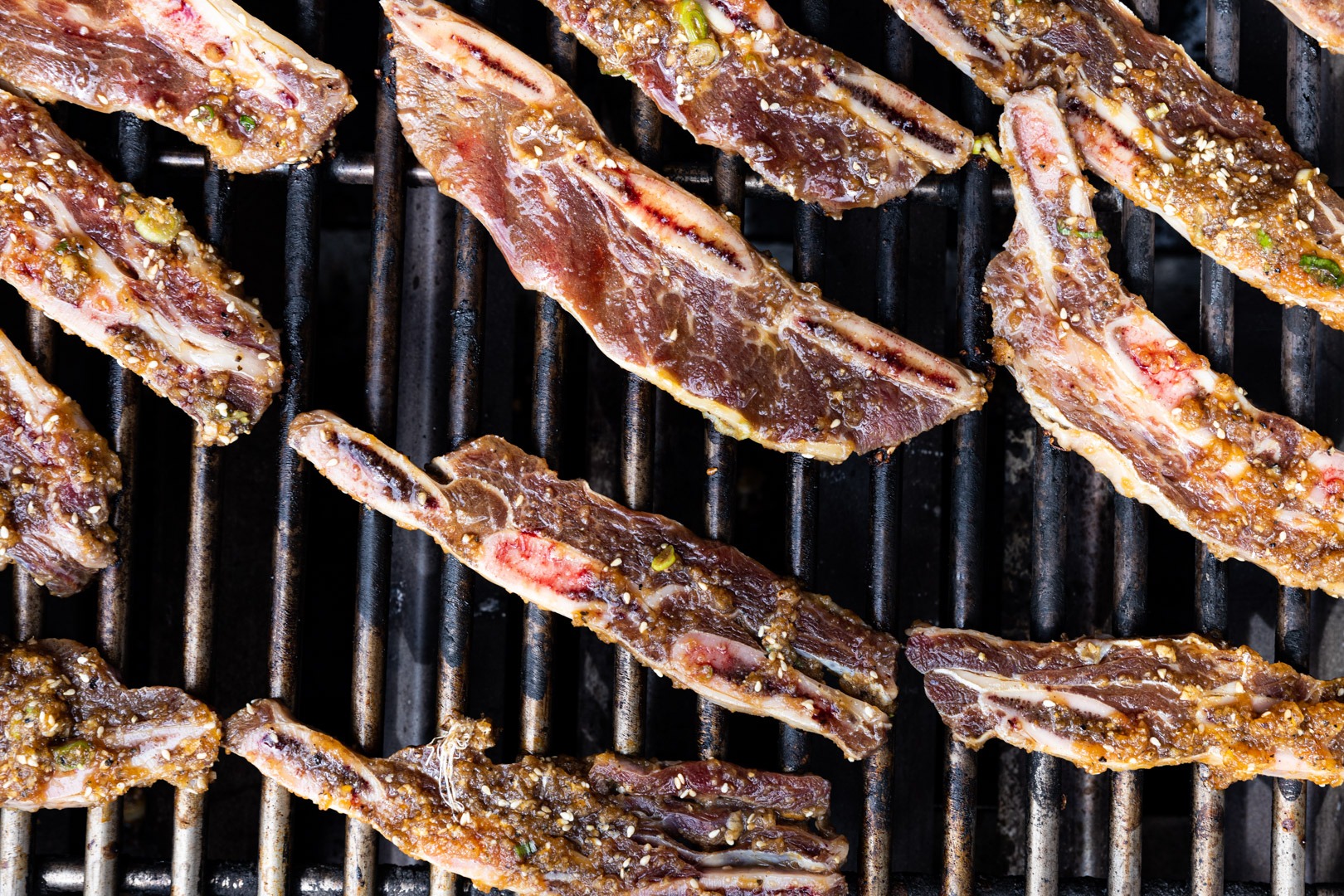
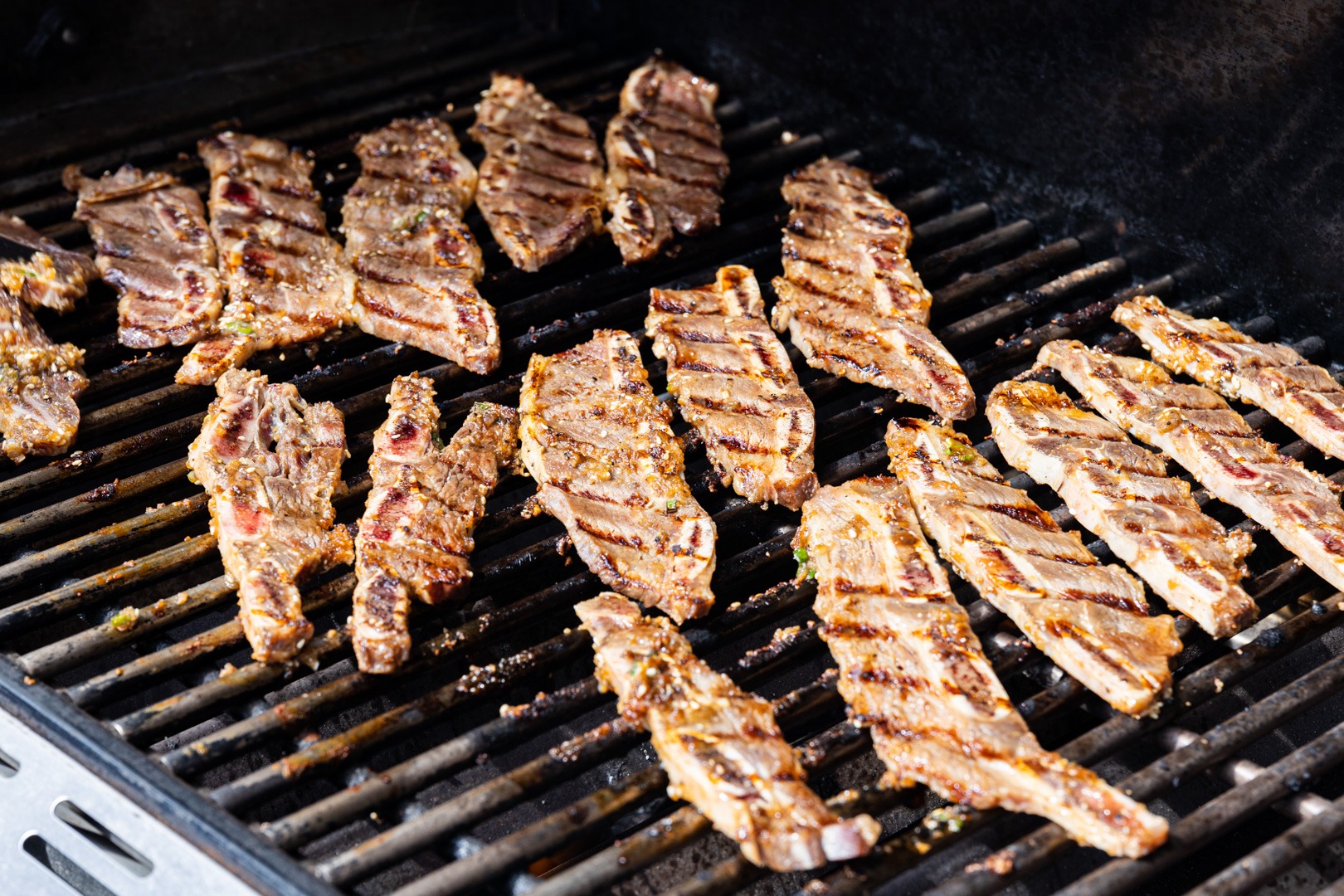
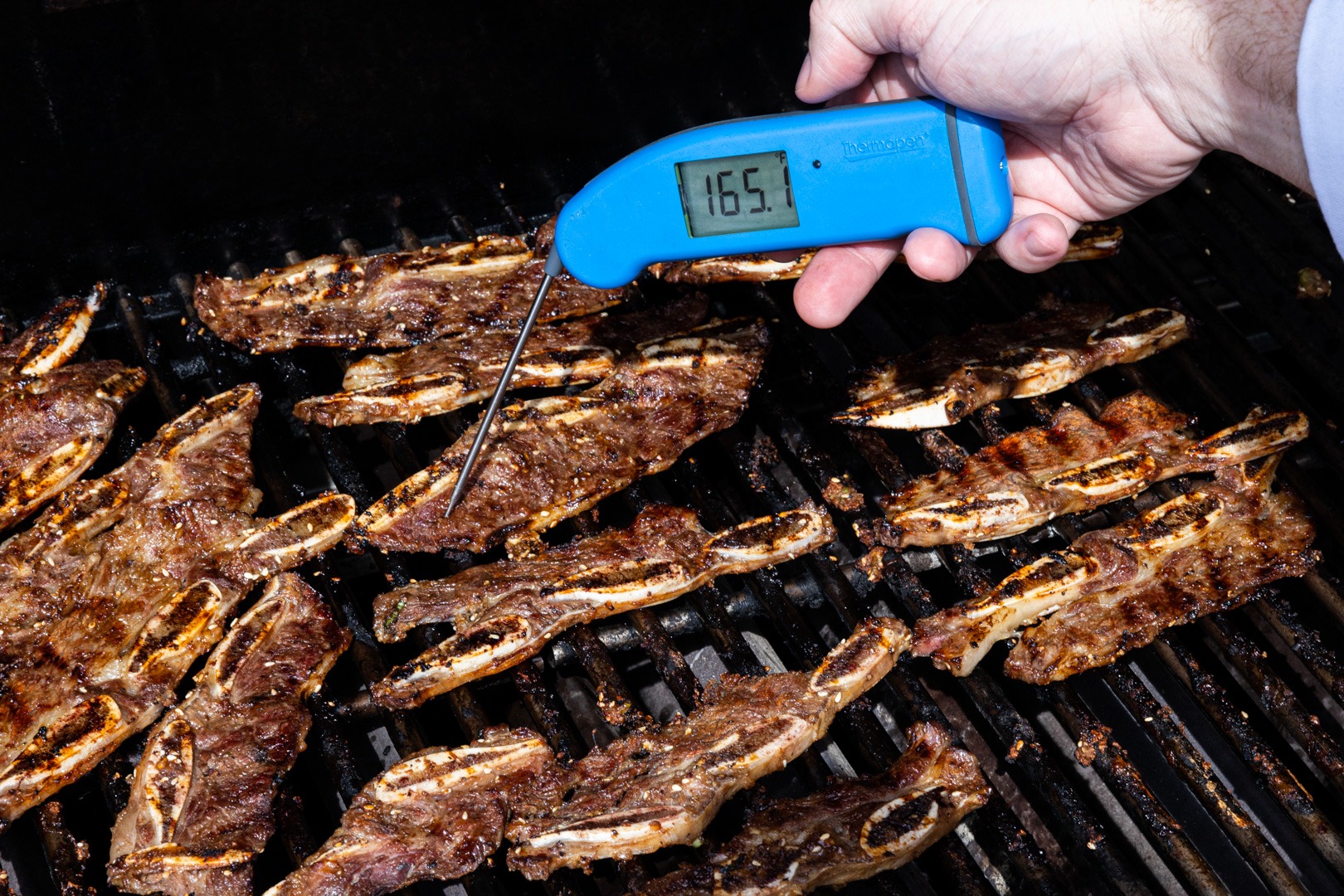
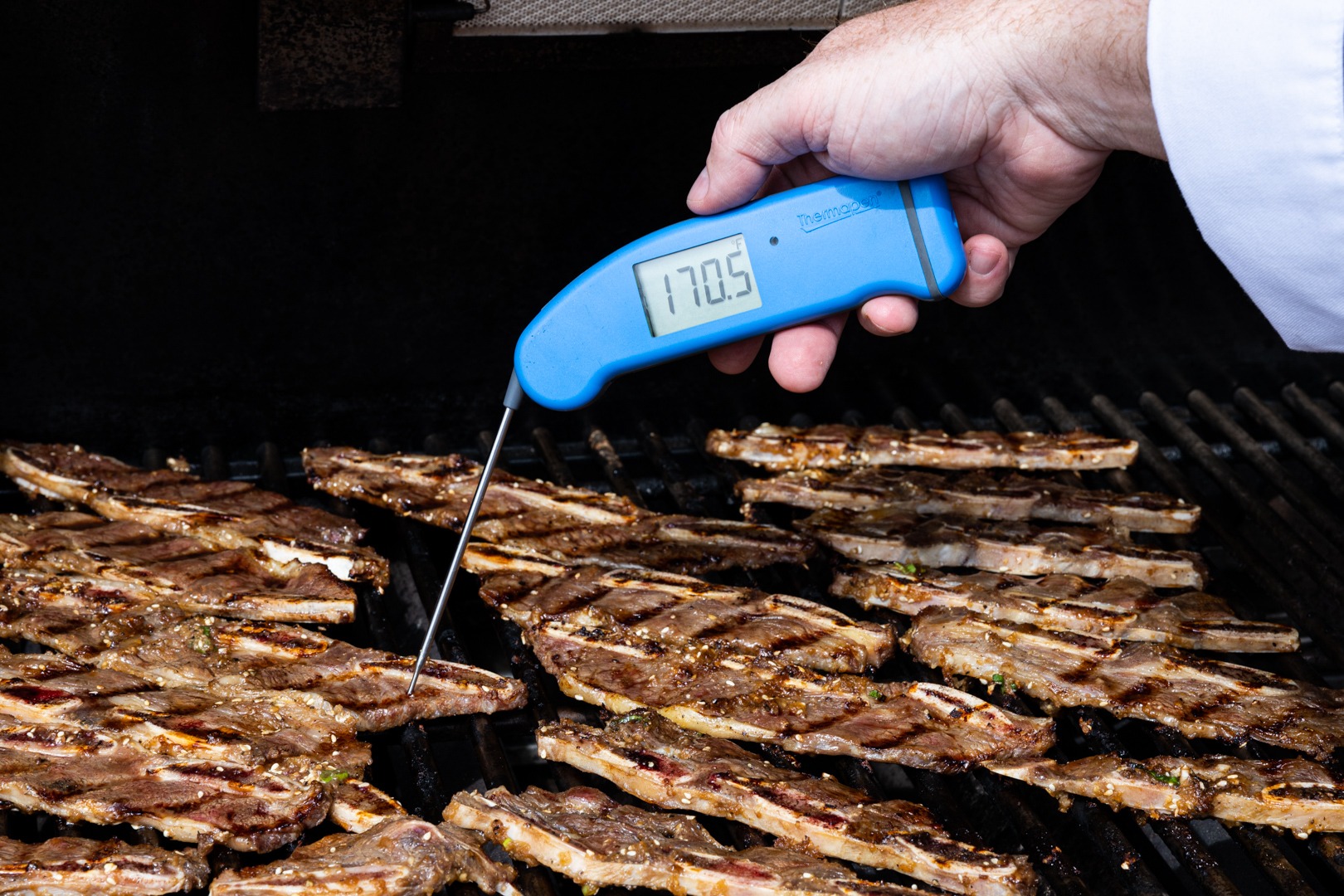
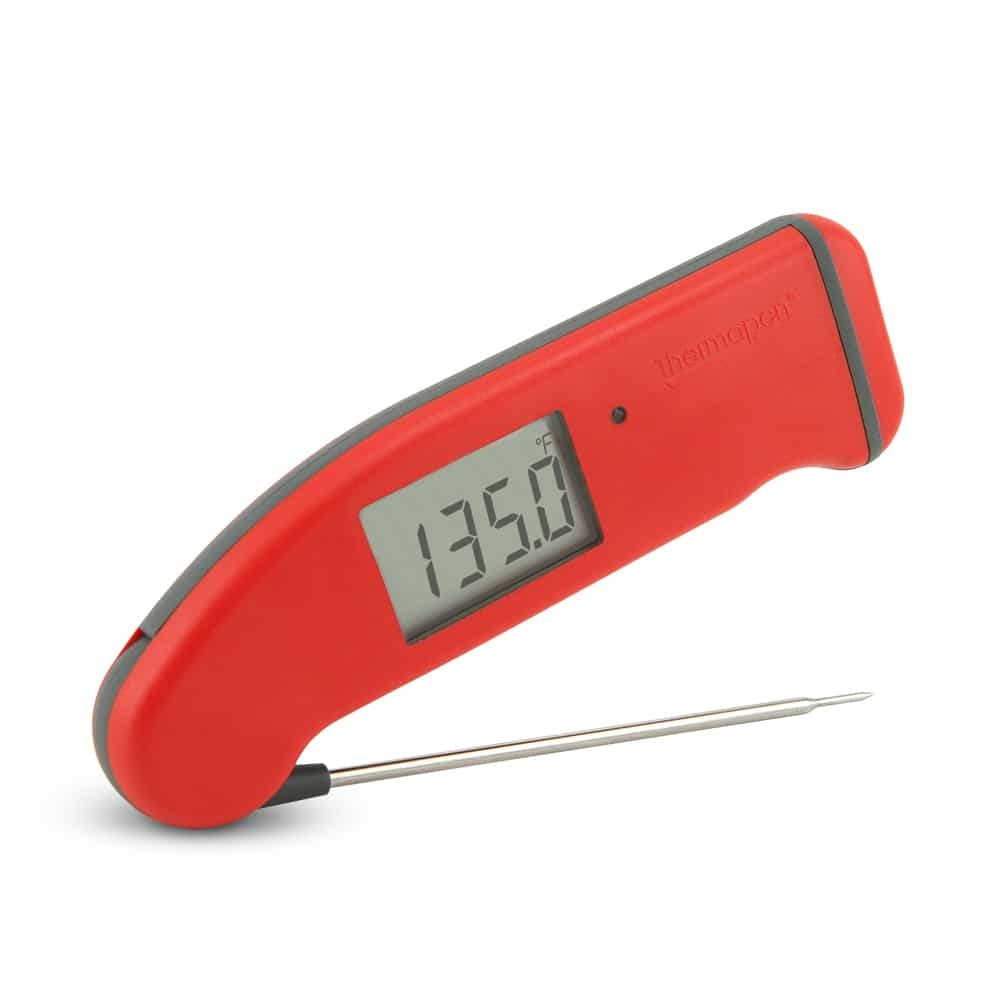
What are the side dishes you are serving with the ribs?
In the images here we have some kimchi (Korean pickled cabbage wich chilies) and some Asain eggplant that has been tossed with salt, fresh chili, and sesame oil before grilling.
Would this work at all using a sous vide since there is a lot of connective tissue? Run it through there for 6 hours or so to tenderize it, then sear it on the grill to finish?
That would almost certainly be AMAZING, though 6 hours might be overdoing it a bit. Give it a try and let us know how it goes!
Thanks for this!! it looks amazing, so I’ll definitely try it ASAP.
To avoid charring the meat with flares, what would you think a nice grill temp would be?
Rich,
I was running it at full high temp (gas grill this time) and didn’t have almost any trouble with flare-ups. So, high, I guess?